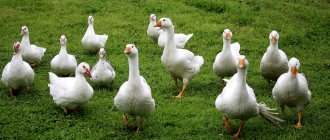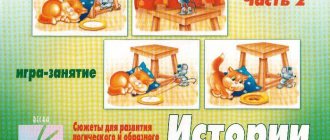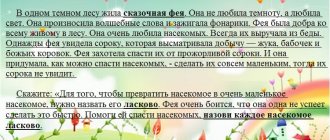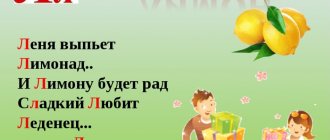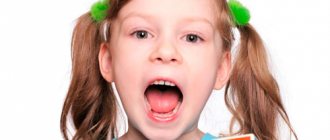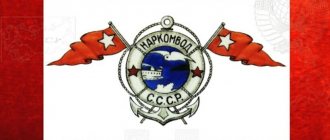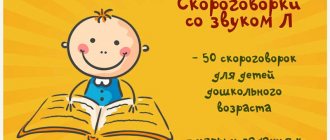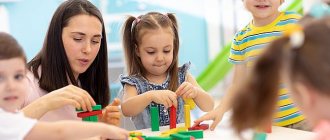Pictures of words starting with the letter E and E for children - 15 pictures
Here is a list of words starting with the letter e and the letter e, which consists of nouns, we specially selected them for small children: Christmas tree, Food, Blackberry, Unicorn, Raccoon, Echidna, Spruce, Hedgehog, Spruce, Elets, Hedgehog, Hedgehog-fish, Container, Brush, Brush.
ATTENTION!
REGISTER FOR COURSES! RECRUITING! More details on the page: https://academy.multi-mama.ru/product/multi-predlozhenie/
Flip through our magazine so that your child can better remember the letter E and the letter E
Please wait while flipbook is loading. For more related info, FAQs and issues please refer to DearFlip WordPress Flipbook Plugin Help documentation.
“SSSpeshilki” A game for automating the sound C in words.
All-Russian competition for speech therapists and defectologists
"Speech therapy board game"
Educational speech therapy board game "SSSpeshilki"
Author of the game: teacher-speech therapist Anna Anatolyevna Sergacheva
Relevance
Consolidating the pronunciation skills of the sound assigned by the speech therapist requires the child to repeat it multiple times in words and phrases every day. But monotonous speech therapy exercises make the process of correcting pronunciation defects boring and therefore unproductive. In order for the play motivation that is natural for preschoolers to give impetus to the formation of correctional motivation, children need interesting, emotionally rich games with a spirit of competition, with the joy of victories and the bitterness of defeats. This material turns the monotonous, routine work of strengthening the pronunciation of sounds into a fun, interesting activity for the child, and gives the speech therapist the opportunity to “playfully” carry out methodical speech therapy training. The game situation creates a relaxed atmosphere, frees the child from constraint, encourages him to communicate, and therefore contributes to faster automation of sound in spontaneous speech.
The purpose of this speech therapy game
: automation of the sound C at the beginning, middle, end of a word, in words with a combination of consonants.
Tasks:
consolidating the correct pronunciation of the sound C in words in different positions, in phrases;
enrichment of subject vocabulary;
development of fine motor skills of the hands;
development of communication skills.
Age audience
: children 4-9 years old who have deficiencies in the pronunciation of the sound S.
Description of the game and recommendations for its use
The game "SSSpashilki" consists of a set of playing fields. To play you need a dice and chips. Chips can be colored pebbles, large buttons, small toys from Kinder surprises, geometric figures cut out of colored cardboard.
This game, like most walker games, uses a dice. I teach children not just to throw it on the table, but to use a cube to massage their palms. To do this, place the cube between your palms and rub it forcefully. Then, without releasing the cube from your hands, place your palms folded together with their edges on the table, round them and release the cube. Thus, the palms prevent the cube from rolling away and falling on the floor.
To maintain children's speech activity, the number of players should be limited to 2-3.
Since the goal of every child is to get to the finish line as quickly as possible, the task of clearly pronouncing the sound C in words is perceived as a burden that slows down movement. In this case, the game loses its corrective speech therapy focus. The speech therapist should demand that the child move the chip only after correctly naming the picture. This requirement should become part of the rules of the game.
Contents of tasks
"Nimble Mouse"
Target:
automation of the C sound at the beginning of a word.
Two players take part in the game.
Speech therapist: “Two mice noticed a piece of cheese and raced towards it. The fastest mouse will get the cheese.”
One player places a piece over the square with a bag, the second player - over the square with a scoop. Children agree with the help of a counting rhyme who will make the first move.
The rooster was sitting on a bench,
I counted my seeds:
- One two Three,
This is where you come out!
Then the players take turns throwing the dice and, in accordance with its readings, move the chips to a certain number of cells, clearly pronouncing the sound C in the words: “C-bag - one, c-salad - two ...:” The players move towards each other, go around a full circle . The player who starts with the picture with the bag ends the game with the picture with the scoop, and the second player, starting with the picture with the scoop, ends with the picture with the bag.
Words:
bag, salad, plane, crackers, bitch, dog, saber, salt, juice, satellite, catfish, sandals, sled, chest, soup, scooter, honeycomb, owl, sugar, boots, bench, scoop.
"Fun Geometry"
Target:
automation of the C sound in the middle of a word.
Two or three players take part in the game.
Players take turns throwing the dice and, in accordance with its readings, move the chips to a certain number of pieces, clearly pronouncing the sound C in the words. If a player's piece lands on a picture in a square
, then the player receives the task of repeating the saying:
Assa-assa-assa, there's a cash register in the store.
Sunok-sunok-sunok, there’s a drawing on the wall.
Link-link-link, heavy package.
Sy-sy-sy, precise scales.
Juice-juice-juice, there is sand in the sandbox.
If a player's piece lands on a picture in a circle,
then the player completes the task of matching the adjective “round” with the noun name of the picture: round squash, round watch, round wheel, round dew drop.
If the player's piece lands on the picture in the triangle,
the player makes a sentence with the name of the picture, for example: The grass is cut with a scythe. The girl has a long braid. A wasp flew into the room. Sonya lost her sock.
Finally, if a player's piece lands on a picture in a polygon,
the player adds the word “many” to the name of the picture.
Words:
cash register, squash, braid, meat, drawing, watch, braid, dishes, parcel, wheel, wasp, beads, scales, dew, sock, scarf, sand.
You can invite the children to “paint” an object in the color of the figure within which this object is located. Or play the game “It happens - it doesn’t happen”
: “Is there a green cash register? And the blue squash? Etc."
The vocabulary material of this game board allows you to play the game "Rhymes"
. For this purpose, the speech therapist gives the task to find words that end the same.
Rhymes: braid-wasp, sock-sand, clock-scales, dew-braid, dew-wasp.
"Curious Magpies"
Target:
automation of the C sound at the end of a word.
Two players take part in the game.
Speech therapist: “Two magpies argued who would be the first to fly to the forest and learn all the forest news.”
Players place chips on the squares with magpies in the lower right and left corners. They agree on who will make the first move. Then they throw the dice one by one and, in accordance with its readings, move the chips to a certain number of cells, clearly pronouncing the sound C in the words.
First, players move their pieces up, then down, and then up again towards the forest.
Words:
lotus, belt, cactus, compass, coconut, pineapple, kvass, tray, apricot, cupcake, nose, ear, bus, globe.
You can offer children a task to develop visual attention: “Find and name all the repeating objects.” “Find and name objects that are not repeated.” “Find objects that are named in one word.” (human nose and airplane nose)
"C"
Target:
automation of the C sound in words with consonant clusters.
Two players take part in the game. The age of the players is 6-9 years.
To play you need sets of chips of two colors. The number of chips in each set is 7-10.
Players determine who will make the first move. Then, one by one, they begin to place chips on the cells and name the objects. The winner is the one who manages to place three chips in a row vertically, horizontally, or diagonally.
The player places a chip on the “tail” and wins, because he placed three chips in a row: mask-gun-tail.
Words:
glass, stingray, sweater, traffic light, chair, stadium, satellite, table, bench, statue, stingray, socks, cabbage, stroller, tail, flippers, gun, ladder, bush, tie, island, lingonberry, mask, currant, leaf.
Gradually, the rules of the game can be complicated: the one who places four chips in a row wins.
Task for the development of visual attention: which object appears twice?”
"Namesame words"
Tasks:
automation of the sound C in words in different positions, familiarity with words that have several meanings.
Before the start of the game, the speech therapist introduces the game participants to the playing field.
Speech therapist: “Guys, look: this is salt and this is also salt. The words are the same, but the objects are different: in the first case it is a food additive, and in the second it is a note. Find more objects that have the same names. All these items are in green frames.”
Players place their chips at the start, alternately throw the dice and, in accordance with its indications, clearly name a certain number of pictures on the playing field: “Salt - one, stroller - two, tail - three...”. If the chip lands on the picture in the green frame, it is transferred to the square with the paired item. You can give the task to make sentences with these words. For example, the chip stopped on the cell where “salt” is. The child makes up the sentence: “They put salt in the soup.” Then he moves the chip to the cell with the paired picture and also makes up a sentence: “The musician plays the note G.”
"Running with obstacles"
Target:
automation of the sound C in different positions in a word.
Speech therapist: “In these competitions, the winner will be the one who gets to the finish line first, overcoming the obstacles: two S sounds in each word.”
The players agree on who makes the first move. Then they throw the dice one by one and, in accordance with its readings, move the chips to a certain number of cells, clearly pronouncing the two C sounds in each word.
Informational resources
Lebedeva I. L. Large speech therapy toy library. Sound L. – Publishing house “Childhood-Press”, 2021
Lebedeva I. L. Large speech therapy toy library. Sound Р. – Publishing house “Childhood-Press”, 2021
Pictures from the Internet.
Pure sayings with the letter E
It is important that the child not only remembers the letter E, but also can speak it correctly. Pure phrases are suitable for such purposes.
Be-be-be, the trumpeter plays the trumpet. De-de-de, we are interested everywhere. Same, same, where is dad? In the garage. Ze-ze-ze, let's take care of the goat. Ke-ke-ke, let's walk lightly. Le-le-le, they got dirty in ash. Me-me-me, we are ready for winter. No, no, no, we are standing aside. Pe-pe-pe, let's look for moths in the cereal. Re-re-re, the fox lives in a hole. Se-se-se, everyone loves cartoons. Te-te-te, take care of the cat. Fe-fe-fe, who lives in Ufa? Hehehehe, you can eat your ear. Tset-tse-tse, there is a tsetse fly.
Che-che-che, do you remember about the doctor? She-she-she, what do you know about noodles? Shh-sche-sche, what’s in the borscht?
Texts and pictures for automation and differentiation of sounds of different groups
Ksenia Zakharova
Texts and pictures for automation and differentiation of sounds of different groups
Texts and pictures for automation and differentiation of sounds of different groups.
[W] [F]
Mitten ( sound “Zh”
,
"SH"
)
The cat Agashka was walking along the path and saw a fluffy orange mitten. The mitten lay on the snow and moved. "What's happened? A living mitten?
- the cat was wary. She pricked up her ears and walked around the mitten on all sides. The mitten continued to move. Agashka pressed the mitten with her clawed paw. Suddenly a gray mouse jumped out of the mitten. The mouse darted into the snowdrift. Only the cat saw her!
[Sh] - the cat, Agashka, walked along the path, mitten, mitten, on the snow, left, walked around, mouse, darted, moved.
[F] – alive, alert, pressed, unexpectedly, orange.
[C] [C']
Old catfish ( sound "S"
,
"WITH'"
)
An old mustachioed catfish sleeps on the sand after a hearty lunch. He feasted on minnows. The minnows splashed on the shallows near the sand spit, and there the catfish were caught.
[S] - sleeps, old, mustachioed, catfish, on the sand, after, hearty, minnows, minnows, by the spit, by the sand.
[S'] – enjoyed it, got caught.
[S] - [S'] - splashed.
[T] [T']
Cooks ( sound "T"
,
"T'"
)
Tom and Petya are here. Tom has a knapsack. There are tomatoes in the bag. Tom will cook the tomato. Petya has a package. There is flour in the bag. Petya will cook pita.
[T] - here, Tom, Tom has a knapsack, in the knapsack, tomatoes, a bag, there will be pita.
[T'] – Petya, at Petya’s, in the bag, to cook.
Text and pictures to automate sounds
[W] [F]
Beetle - fireman ( sound "Zh"
,
"SH"
)
On the lawn along the path there is yellow tansy. Tansy has a heavy head of flowers. A fireman beetle is circling and buzzing above the yellow tansy. The beetle has hard wings and a soft abdomen.
[C] [C']
Sonya's dog ( sound "S"
,
"WITH'"
)
Sonya has a dog, Bessie. Bessie is a Russian spaniel. He is cheerful, spotted, fold-eared. Sonya walks with Bessie in the park. Bessie runs through the bushes and chases jays. And Sonya collects autumn leaves.
[H] [Sh] [C] [S']
Sheep ( sounds "H"
,
"Ш"
,
"Ц"
,
"С'"
)
Vanechka grazes sheep no cooler by the river. Black sheep with rings. The sheep nibble leaves and drink water as they go down the steep slope to the river.
In the evening Vanechka drives the sheep home. The sheep hurries to the sheepfold. There are lambs there - black lumps in curls.
[L] [L'] [R] [R']
Pick mushrooms ( sounds "L"
,
"L'"
,
"R"
,
"R'"
)
Brothers Ilya and Kirill were picking mushrooms in a birch grove. Near the path they found scatterings of chanterelles, under an old birch tree they saw strong porcini mushrooms, and near the Christmas tree - crispy saffron milk caps. In an open clearing in the grass, the brothers discovered a whole family of white milk mushrooms. Until the evening they met multi-colored russula , black-headed boletus, and pink boletus. Grandma will be happy to see the baskets of her beloved grandchildren.
